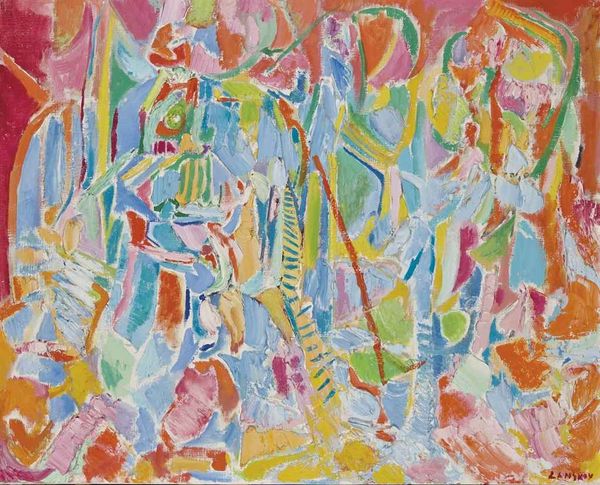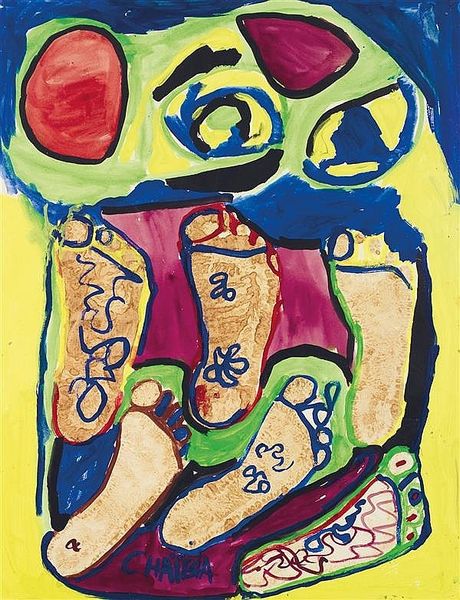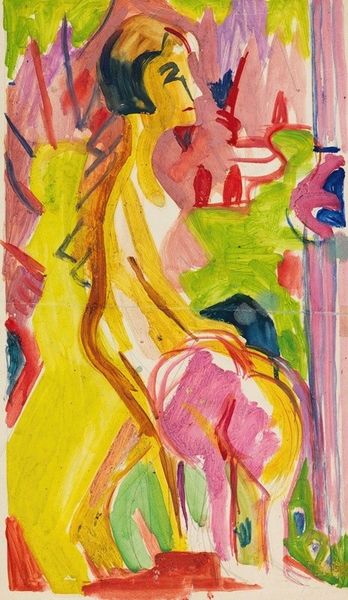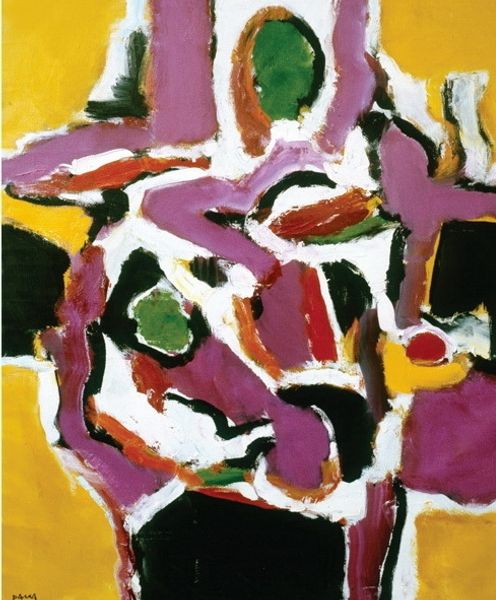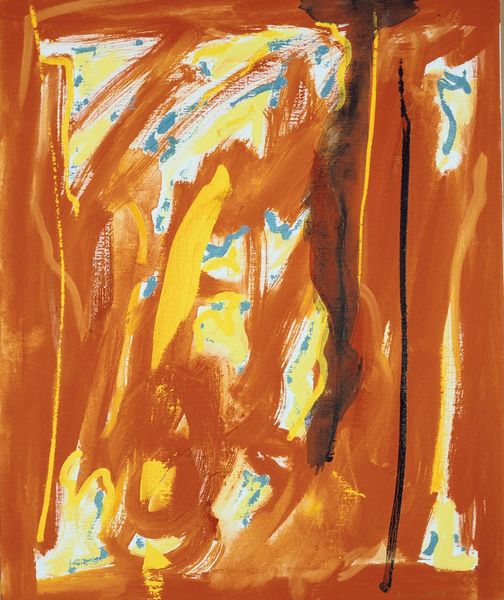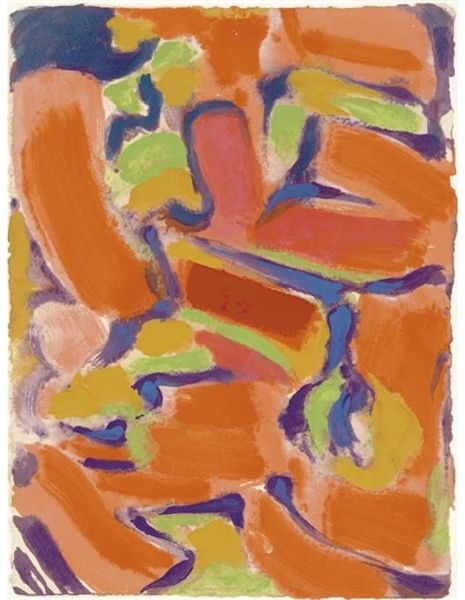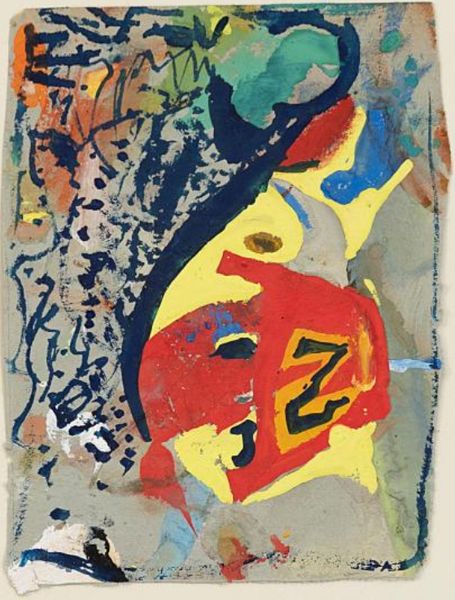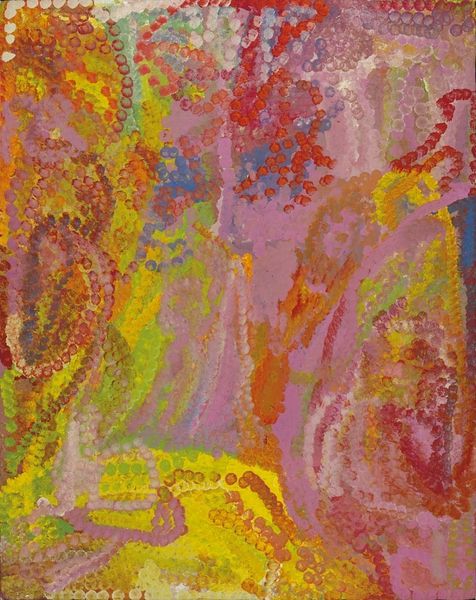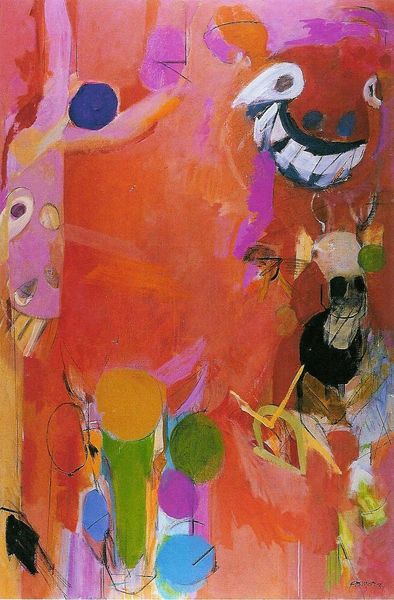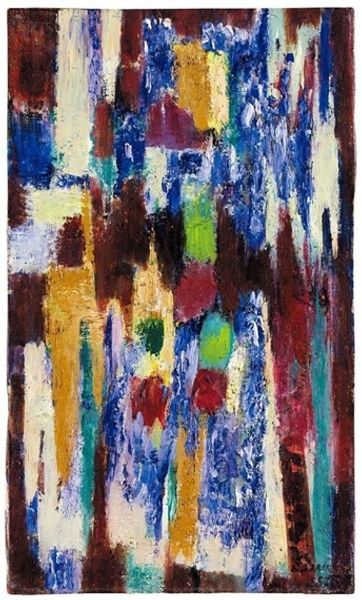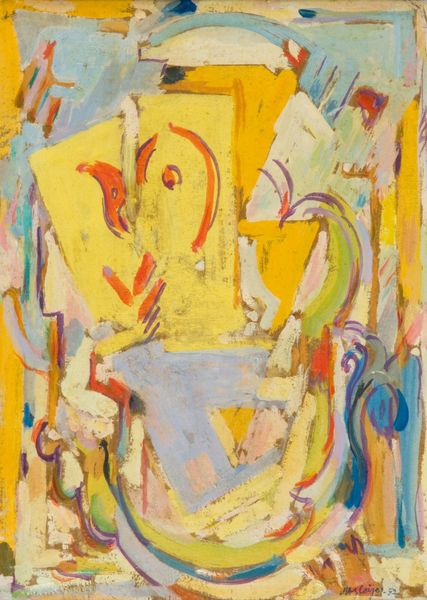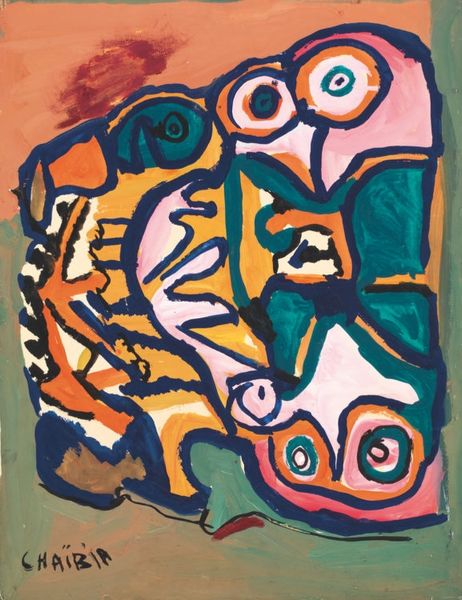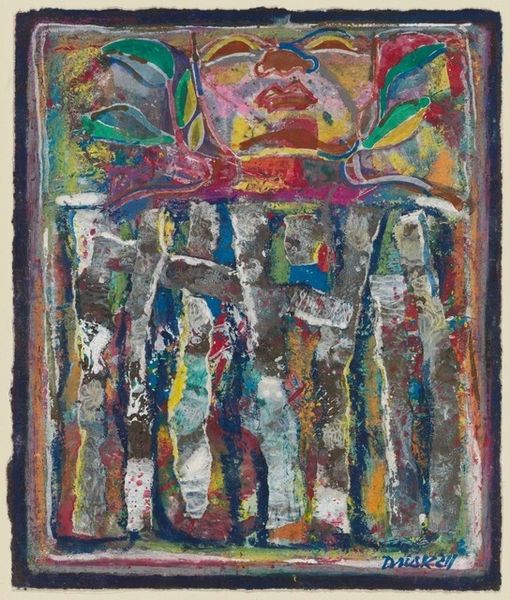
Copyright: Ronnie Landfield,Fair Use
Editor: We’re looking at Ronnie Landfield’s "Sky Dance" from 1973, an acrylic on canvas. I find the colors very striking; there's a push and pull between vibrant warmth and cooler hues. How do you interpret this work within the context of its time, or even today? Curator: That push and pull you observe is key. In 1973, anxieties surrounding social upheaval, the aftermath of the civil rights movement, and second-wave feminism were palpable. Landfield’s energetic abstraction, with its seemingly disparate colors, echoes the tensions of negotiating a changing cultural landscape. Do you see how the vertical lines create a sense of both confinement and upward striving? Editor: I do, especially the thicker orange on the left edge; it feels very grounded compared to the rest of the composition. So, are you suggesting that "Sky Dance" isn't just about aesthetics but also about social anxieties? Curator: Absolutely. Abstract Expressionism, while often critiqued for its supposed lack of direct social commentary, can also be seen as a reaction against rigid societal structures. The lack of clearly defined forms and figures, for instance, could reflect a questioning of fixed identities. Think about the struggle for visibility of marginalized identities reflected in the artwork. What's visible? What isn’t? Editor: That’s a perspective I hadn't fully considered. The ambiguous forms, the tension...it makes sense now that it’s a visual representation of societal turbulence. It almost feels unfinished, chaotic. Curator: Precisely! It captures the unsettled energy of an era grappling with change. The beauty, however, lies in its willingness to confront those difficult emotions through abstraction. Where do you think the "dance" of the title comes in to play here? Editor: That's an excellent question; it really changes the way I view the lines... Maybe the dance is the dialogue within the chaos. This was incredibly insightful, thank you. Curator: And thank you; your reading is powerful and deeply appreciated. These dialogues help to keep the artworks relevant and alive, as more than artifacts in a history book.
Comments
No comments
Be the first to comment and join the conversation on the ultimate creative platform.
